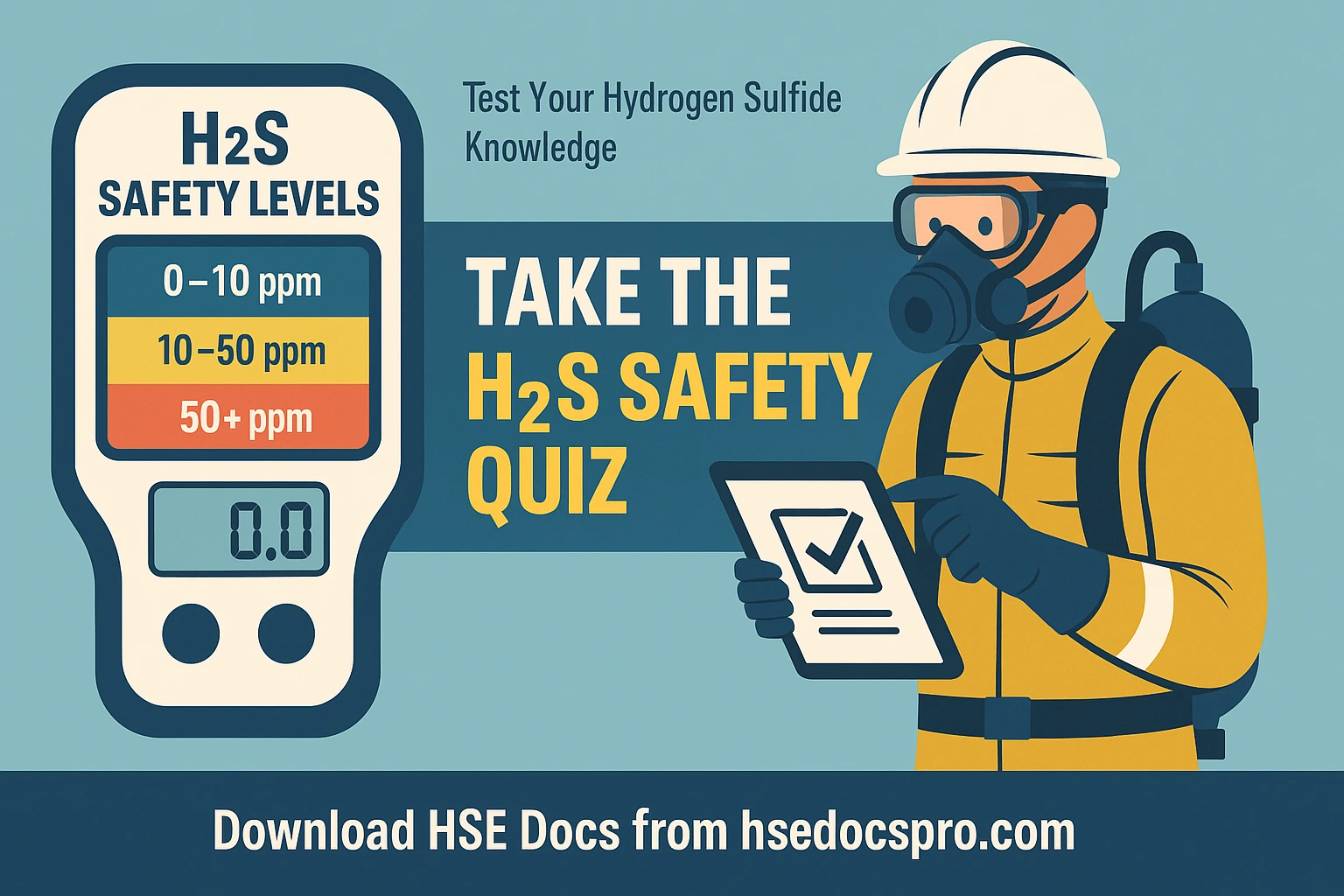H2S Safety is a critical concern across oil & gas, wastewater, and industrial sectors. Hydrogen sulfide (H2S) is a colorless, toxic, and highly flammable gas that can kill within seconds if mishandled. To help workers and safety officers identify gaps in their knowledge, this post offers a comprehensive H2S Safety Quiz featuring 30 essential questions covering hazards, exposure, PPE, detection, and emergency protocols.
Why Take This H2S Safety Quiz?
- ✅ Evaluate your knowledge on hydrogen sulfide hazards
- ✅ Prepare for site inductions and safety audits
- ✅ Reinforce emergency response skills and PPE usage
What is H2S and Why Is It Dangerous?
Hydrogen sulfide (H2S) is heavier than air and tends to accumulate in confined or low-lying spaces. It smells like rotten eggs at low concentrations, but at higher levels, the olfactory nerves become paralyzed—eliminating the warning sign. H2S attacks the nervous system and can cause unconsciousness or death within minutes.
⚠️ H2S Exposure Risks and OSHA Standards
- OSHA PEL (Permissible Exposure Limit): 20 ppm (Ceiling)
- NIOSH IDLH (Immediately Dangerous to Life or Health): 100 ppm
- Symptoms by ppm:
- 10–20 ppm: Eye irritation, headaches
- 100–300 ppm: Loss of smell, severe health effects
- 500+ ppm: Collapse, respiratory failure, death
Source: OSHA.gov
Common Workplace Scenarios Where H2S Is Present
- Oil rigs and gas extraction platforms7
- Wastewater treatment plants
- Sewer entry and confined space maintenance
- Petrochemical refineries
PPE & H2S Detection Methods
To ensure H2S safety, workers must wear calibrated gas detectors near their breathing zone. In zones with high risk or IDLH levels, use of SCBA (Self-Contained Breathing Apparatus) is mandatory. Other essential equipment includes:
- Portable gas detectors with audio-visual alarms
- Emergency escape respirators
- Full-face respirators and chemical-resistant suits
Emergency Response Procedures
All personnel must be trained in emergency evacuation triggered by H2S alarms. Use upwind escape routes, never re-enter the area without proper clearance, and always operate with the buddy system in place.
Real Stats: H2S Fatalities
According to OSHA data, dozens of workers have died in recent years due to hydrogen sulfide exposure—primarily because they lacked detection tools or didn’t recognize the signs.
How This Quiz Helps Improve H2S Safety
This quiz is based on real-world case studies, OSHA standards, and safety audit findings. You’ll be tested on symptoms, safety tips, equipment handling, and more—ideal for workers, supervisors, and HSE officers in high-risk industries.
Want More HSE Tools?
✅ Take the H2S Safety Quiz Now
Scroll back up and complete the quiz to see if you’re ready for real-life H2S challenges. Share it with your team and reinforce life-saving knowledge today.


